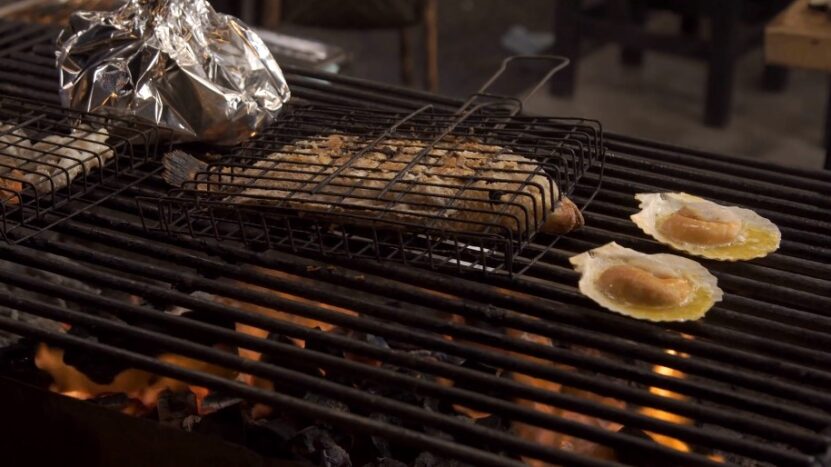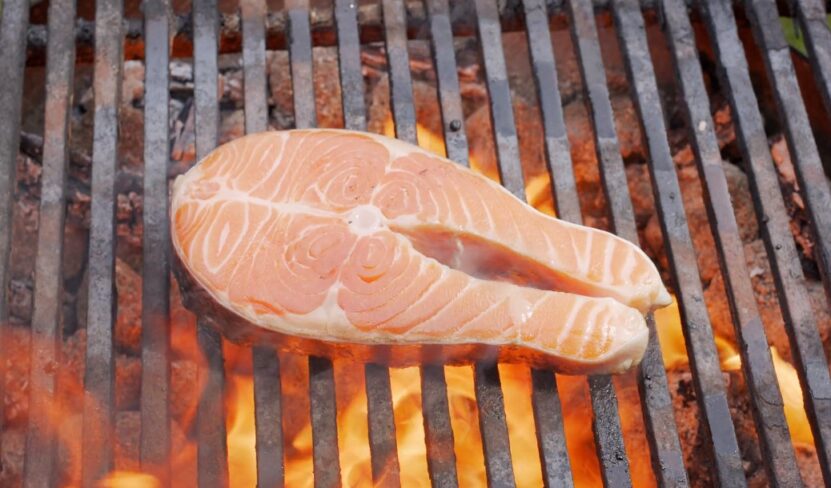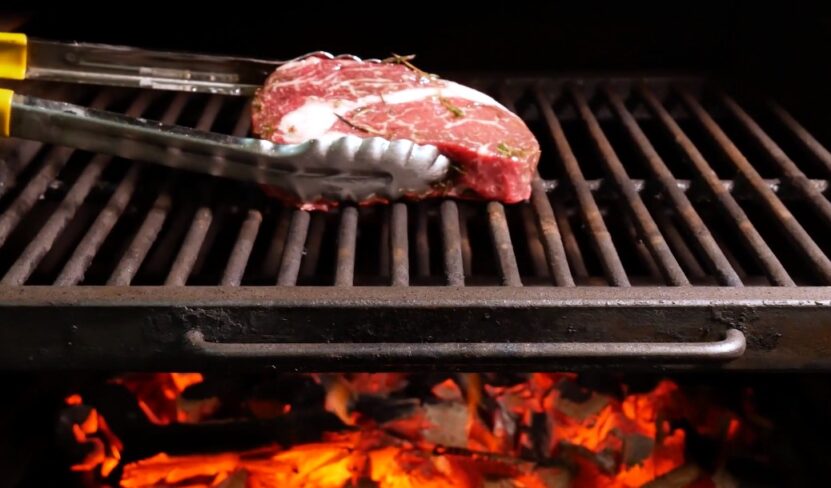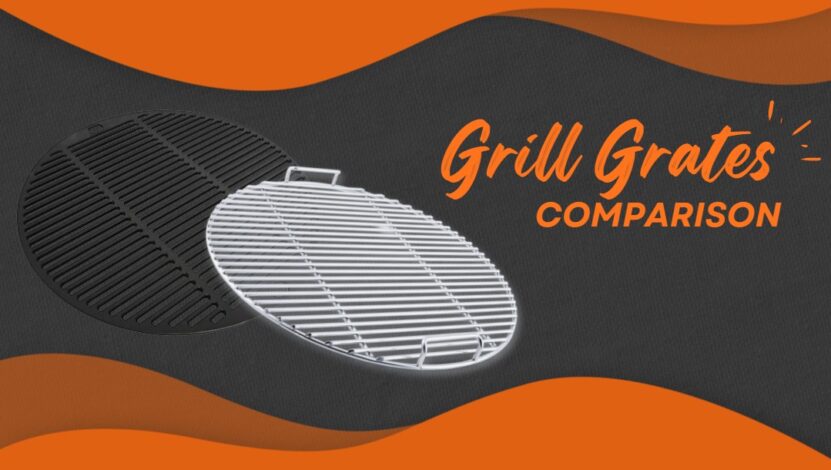Hello, dear readers, and welcome back to our blog. Today we will dive deep into the fiery world of grills, focusing on a critical yet often overlooked part: the grill grates. If you’re considering a new barbecue grill or replacing your grill grates, you’ve probably come across two popular materials – stainless steel and porcelain. But which one should you choose? That’s the question we will answer in this comprehensive comparison of stainless steel versus porcelain grill grates.
Overview
First, let’s understand what grill grates are and why their material matters. Grill grates are the surface on which you cook your food. They play a key role in heat distribution, searing your food, and influencing the flavor of your grilling. So choosing the right grate material is essential for your barbecue experience.
There are several materials available for grill grates, but stainless steel and porcelain are two of the most popular thanks to their durability and performance. Let’s dive into the specifics of each.
Stainless Steel Grill Grates

Stainless steel is known for its robustness and longevity. It’s no surprise that many professional chefs and grilling enthusiasts love stainless steel grill grates.
Pros
1. Durability
Stainless steel grates are incredibly durable. With proper care, they can last a lifetime, resisting rust and corrosion effectively.
2. Heat Retention
Stainless steel retains heat exceptionally well. It’s excellent for searing meats and achieving those coveted grill marks.
3. Easy Maintenance
Unlike some materials, stainless steel is non-porous, making it easy to clean. It doesn’t absorb food particles or odors, which can affect the flavor of your food.
Cons
1. Price
Stainless steel grates tend to be pricier than their porcelain counterparts. The high-quality material and durable construction often come with a higher price tag.
2. Food Sticking
Despite being non-porous, stainless steel grates can sometimes cause food to stick, especially if the grates are not properly preheated or oiled.
Porcelain Grill Grates

Porcelain grill grates are typically made of steel or cast iron, coated with a layer of porcelain enamel. This gives them some unique advantages and disadvantages.
Pros
1. Non-Stick Surface
Thanks to the porcelain coating, these grates have a naturally non-stick surface. This makes them excellent for delicate foods like fish and vegetables, which might stick or fall apart on other surfaces.
2. Easy to Clean
Porcelain grates are easy to clean, as the food doesn’t stick to the surface. They’re also resistant to rust, ensuring they maintain a clean, sleek look over time.
3. Affordable
Compared to stainless steel, porcelain grates tend to be more affordable. This makes them a popular choice for casual grillers and those on a budget.
Cons
1. Durability
While porcelain grates are durable, they’re not quite as long-lasting as stainless steel. If the porcelain coating chips or cracks, the underlying metal can rust, reducing the grate’s lifespan.
2. Heat Retention
Porcelain grates do not retain heat, as well as stainless steel. This can affect the grilling performance, especially for searing meats.
Digging Deeper into Stainless Steel and Porcelain Grill Grates
Welcome back, grill enthusiasts! Let’s dig deeper into our exploration of grill grate materials, focusing on some finer details you might not have considered about stainless steel and porcelain grates. It’s all about equipping you with the best knowledge to make the most informed decision.
Grilling and Flavor: Does Material Matter?
Beyond their physical attributes, an important aspect to consider is how different materials can influence the flavor of your grilled food.
Stainless Steel
Stainless steel, due to its high heat retention, can give a fantastic sear to your meat, locking in flavors and juices. This can create a caramelization effect that many grillers prize for its contribution to the final taste of the dish. However, stainless steel grates generally don’t contribute any additional flavor to the food, unlike cast iron grates which are known for enhancing smoky flavors.
Porcelain
Porcelain grates, on the other hand, don’t impart any distinct flavor to your food. They provide a cleaner and more uniform cooking surface due to their smooth coating. This means your food will primarily taste of its own flavors and any marinades or spices you’ve added. Porcelain grates can help keep delicate flavors intact without adding any metallic undertones.
Heat Distribution

A crucial factor in grilling is how evenly the heat is distributed across the grates.
Stainless Steel
Stainless steel excels in this department. Its high heat retention allows it to distribute heat evenly across the entire grilling surface. This is particularly beneficial when you’re cooking large cuts of meat or other food items that require a consistent temperature.
Porcelain
Porcelain grates may not distribute heat as evenly as stainless steel. This is due to the porcelain coating, which doesn’t retain heat as efficiently. However, this is rarely a deal-breaker as the difference isn’t overly significant for most grilling applications.
Environmental Considerations
With growing concern for the environment, it’s worth considering the environmental impact of your grill grate choice.
Stainless Steel
Stainless steel is highly recyclable, making it an environmentally friendly choice. Its durability also means a less frequent replacement, reducing waste.
Porcelain
While the base metal of porcelain grates can also be recycled, the porcelain coating complicates the process. The need for more frequent replacement also poses an environmental concern.
Mastery over Heat: Direct and Indirect Grilling

To step up your grilling game, you need to master the art of managing heat. Two main techniques can be utilized here: direct and indirect grilling.
Stainless Steel
Given stainless steel’s superior heat retention and distribution, direct grilling is a breeze. Direct grilling involves cooking food directly above the heat source. It’s perfect for searing and cooking thin or small pieces of meat, vegetables, or any food that cooks quickly.
On the flip side, stainless steel’s impressive heat retention also allows for indirect grilling. This method requires the food to be placed away from the heat source, allowing for slower cooking. It’s ideal for larger cuts of meat that need to be cooked through without charring the exterior.
Porcelain
Porcelain grates, while not as efficient in heat retention, work well for direct grilling. Their smooth surface reduces sticking, making flipping and handling food easier.
For indirect grilling, porcelain grates require a little extra care. Given their less efficient heat retention, it’s crucial to monitor your grill’s temperature to ensure it remains steady during the cooking process.
Advanced Techniques: Smoking and Planking

Grilling isn’t just about searing and roasting; other techniques can elevate your culinary creations.
Stainless Steel
Stainless steel grates can withstand high heat, making them ideal for smoking. This involves maintaining a low temperature for several hours to infuse your food with a smoky flavor. Stainless steel’s heat retention allows for a consistent temperature throughout the smoking process.
Porcelain
Porcelain grates, due to their smooth, non-stick surface, work great for planking. This technique involves cooking food, particularly fish, on a wooden plank. The plank, typically made of cedar, infuses the food with a distinct, aromatic flavor. The non-stick surface of porcelain grates ensures the plank can be easily removed after grilling.
The Impact of Grate Spacing
Grate spacing or the size of the gaps between the grates can also significantly impact your grilling.
Stainless Steel
Stainless steel grates often come with closer spacing. This prevents smaller food items from falling into the grill and provides a more uniform cooking surface.
Porcelain
Porcelain grates, while having similar spacing, are often favored for their smooth surface. Even with larger gaps, the risk of food sticking and tearing is minimized.
Final Words
Mastering the art of grilling goes beyond just choosing the right grate material. By understanding how to leverage the strengths of both stainless steel and porcelain grates, you can unlock an array of flavors and techniques.
Remember, the joy of grilling comes not just from the food but also from the process. So, get out there, start experimenting with these advanced techniques, and most importantly, enjoy the journey.
Thanks for being part of our grilling grate deep dive. We hope this series has armed you with knowledge and sparked the inspiration for your next grilling adventure. Until next time, let the aroma of grilled goodness fill the air!

